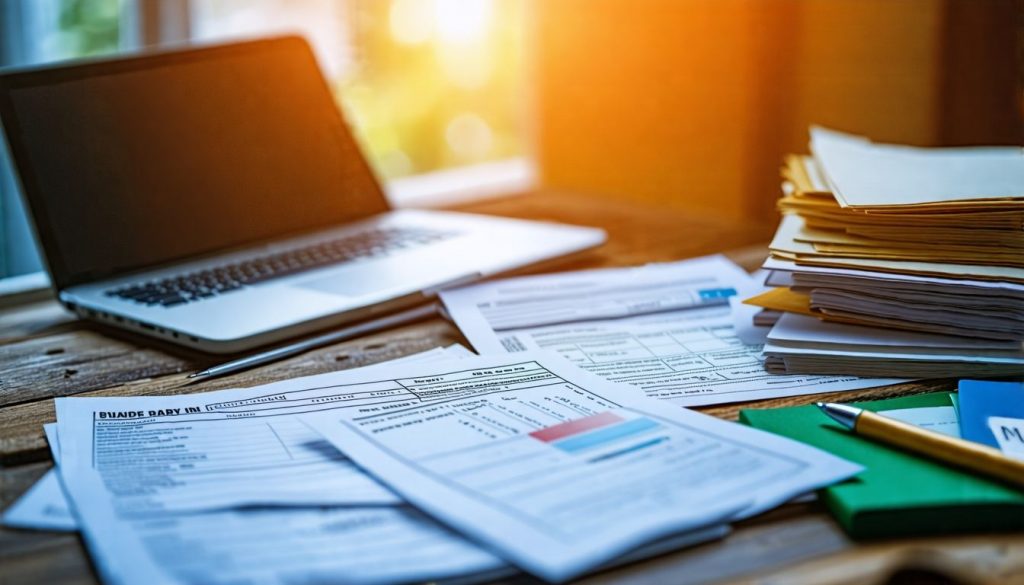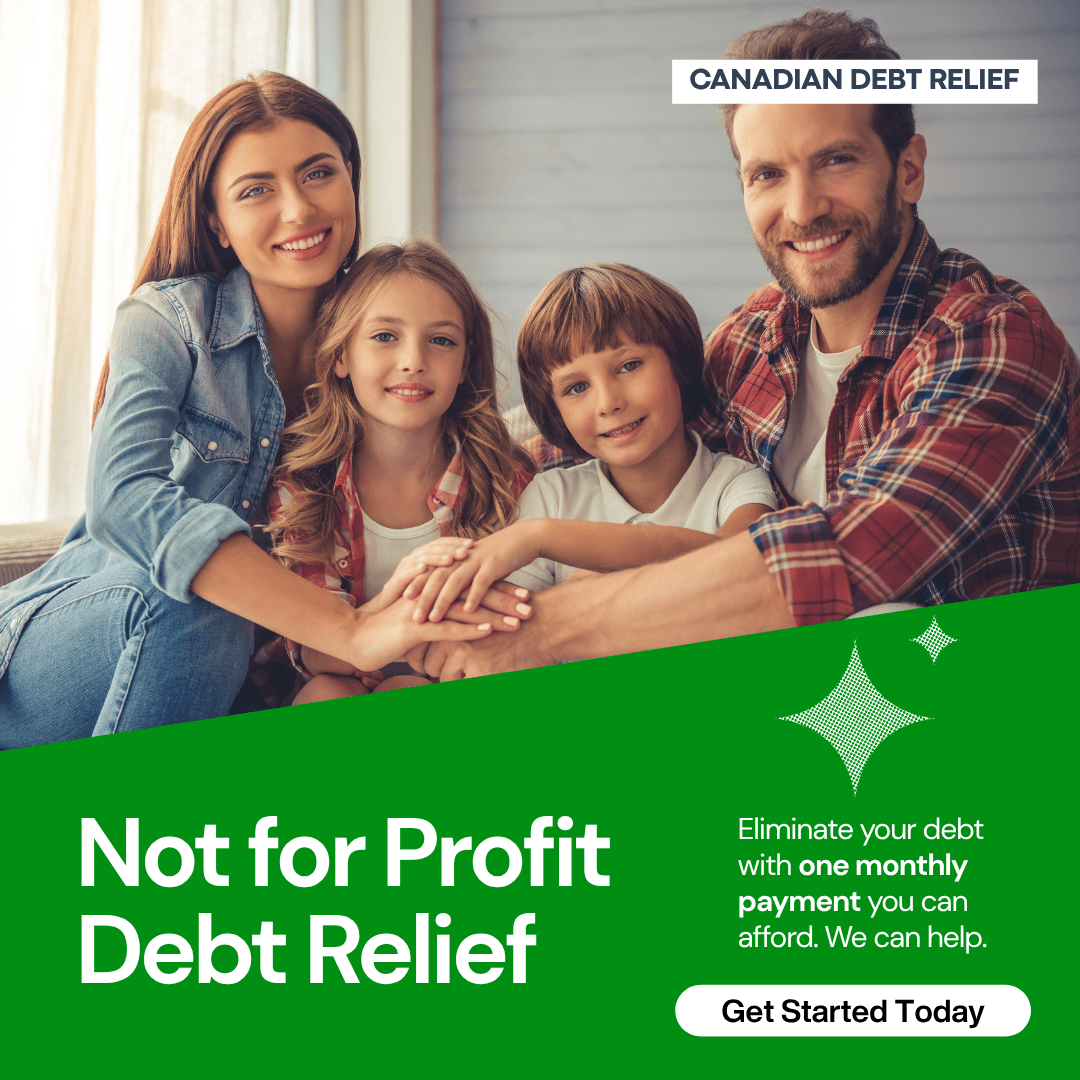Finding the best way to get out of credit card debt is a common challenge many Canadians face. In Canada, the average household carries significant credit card debt, emphasizing the need for effective management strategies.
This guide will explore practical steps to tackle this issue, from debt repayment strategies like the snowball and avalanche methods to exploring debt consolidation options and seeking professional help.
Ready to take control?
Key Takeaways
- Prioritize your debts by listing them all, then focus on paying off high-interest ones or small balances first to save on interest and gain momentum.
- Consider using the snowball or avalanche method for clearing debt; choose based on whether you prefer knocking out smaller debts first or tackling high-interest rates right away.
- Making extra payments beyond the minimum can significantly reduce your credit card debt over time and save you money in interest charges.
- Look into debt consolidation options like balance transfer cards or personal loans to simplify repayments and potentially lower your interest rate.
- Reduce everyday expenses through budgeting, cutting unnecessary subscriptions, eating at home more often, and finding cheaper insurance rates to free up more money for paying off debt.
Understanding Credit Card Debt
Credit card debt is a significant concern for many Canadians. It often arises when people exceed their spending limits or face unexpected expenses without adequate savings. High credit card interest rates can make this type of debt especially burdensome, leading to a cycle of payments that barely dent the principal owed.
Understanding the nature of credit card debt is crucial for effective management and reduction strategies. Many find themselves juggling multiple cards, each with varying balances and terms.
This complexity can complicate financial planning and budgeting efforts. Familiarizing oneself with key concepts like managing financial debt through approaches such as the snowball method for paying off debt or considering balance transfer options can set the foundation for better credit card debt management.
Sound financial literacy empowers individuals to take control over their credit card debts.
Strategies for Paying Off Credit Card Debt
To manage credit card debt effectively, try different strategies that fit your financial situation. Each method offers a unique approach to reducing what you owe and gaining control over your finances.
Prioritizing debts
Prioritizing debts helps you focus on what to pay off first. This strategy can save you money in interest and help reduce your credit card debt more effectively.
- List Your Debts
Write down all of your credit card debts. Include the outstanding balance, interest rate, and minimum monthly payment for each account. Having a clear picture makes it easier to see which debts need attention first.
- Identify High-Interest Debts
Focus on credit cards with the highest interest rates. Paying these off first will minimize the amount of interest you’ll pay over time, making your overall debt reduction more efficient.
- Consider Balances
Look at the total balances on each card. Sometimes, it makes sense to tackle smaller balances first for quick wins. This approach can provide motivation and momentum as you complete these payments faster.
- Evaluate Monthly Payments
Assess how much you can afford to pay each month towards your debt reduction goals. If possible, allocate extra funds to high-priority debts while still making minimum payments on others.
- Use the Snowball Method or Avalanche Method
Choose between two popular methods for tackling debts: the snowball method focuses on paying off lower balances first while the avalanche method targets higher interest rates first. Each has its benefits; select one that aligns with your financial habits and mindset.
- Set Payment Goals
Create specific goals for paying off each debt within a certain timeframe. Establishing clear timelines keeps you accountable and motivated throughout your debt management journey.
- Adjust as Needed
Monitor progress regularly and adjust your strategy based on any changes in income or expenses. Flexibility is crucial in managing credit card debt effectively, especially if unexpected costs arise.
- Communicate with Creditors
If you’re struggling with payments, contact creditors directly to discuss options like lowering interest rates or setting up payment plans. Open communication may lead to better terms that facilitate quicker repayment.
- Track Your Progress
Regularly review how much debt you’ve paid off compared to what remains unpaid. Tracking success offers encouragement and reinforces positive financial habits throughout this process.
- Stay Committed
Consistency is vital when prioritizing debts over time, particularly in achieving long-term credit card debt reduction goals through personal finance tips for debt relief strategies like using cash or debit instead of credit cards whenever possible.
Using the avalanche method
The avalanche method focuses on paying off your highest-interest credit card debt first. This strategy minimizes the total interest paid over time, allowing you to save money and become debt-free faster.
Identify all your debts and organize them by interest rate. Allocate any extra funds towards the card with the highest rate while making minimum payments on others.
Once that high-interest card is paid off, move to the next one on your list. Continue this pattern until all debts are eliminated. The avalanche method for debt repayment can significantly accelerate your progress and ease financial pressure as you tackle credit card consolidation more efficiently.
Utilizing the snowball method
The snowball method for debt is an effective strategy to tackle credit card balances. Start by listing your debts from smallest to largest, regardless of the interest rates. Focus on paying off the smallest debt first while making minimum payments on others.
As you eliminate each small balance, redirect that payment amount toward the next one, creating a “snowball” effect.
This approach helps build momentum and confidence in managing finances, especially for Canadians overwhelmed by multiple obligations. Achieving smaller victories can motivate individuals to stay committed to their goal of becoming debt-free.
Explore this method as part of your personal finance management plan for greater success in reducing credit card debt.
Making extra payments
Making extra payments can significantly accelerate your journey out of credit card debt. Paying more than the minimum due each month reduces your principal balance faster, which in turn lowers the amount of interest you’ll pay over time.
For example, if you have a $5,000 balance with an interest rate of 20%, making just the minimum payment could take years to pay off and cost you hundreds in interest.
By allocating any extra money—whether from a bonus at work or savings from cutting expenses—you can make additional contributions toward your highest-rate card first. This approach aligns well with both the avalanche method and snowball method for tackling debts effectively.
Consider using this strategy alongside options like credit card balance transfers or exploring debt relief programs to maximize your efforts in seeking debt relief assistance.
Options for Debt Consolidation
Debt consolidation can simplify your payments by merging multiple debts into one. You might choose balance transfer credit cards or personal loans to help manage your financial obligations.
Balance transfer credit cards
Balance transfer credit cards can be an effective tool for Canadians seeking to reduce credit card debt. These cards typically offer a low or even 0% interest rate on transferred balances for an introductory period, making it easier to pay off existing debts without accruing additional interest.
By moving high-interest balances onto a balance transfer card, individuals can save money and accelerate their repayment schedule.
To maximize the benefits of these cards, it’s essential to understand any fees involved and the duration of the promotional rate. Timing payments effectively before higher rates kick in is crucial for success with this debt reduction strategy.
This option allows individuals to focus on their financial health while negotiating with creditors or exploring credit counseling services if needed.
Personal loans
Personal loans can be an effective option for Canadians seeking to consolidate credit card debt. They typically offer lower interest rates compared to credit cards, which can save money over time.
Borrowers receive a lump sum and repay it with fixed monthly payments over a set period. This structure provides predictability in budgeting.
Choosing the right personal loan involves comparing rates from different lenders and understanding the terms of repayment. Responsible borrowing can simplify debt management while helping you work toward financial stability.
The next section explores various options for debt consolidation through balance transfer credit cards.
Debt management plans
Debt management plans (DMPs) offer a structured approach to tackle credit card debt. They allow you to consolidate your payments into one monthly sum, often at a reduced interest rate.
A reputable credit counseling agency can help set up a DMP for you. This plan typically lasts three to five years and aims for you to become debt-free within that period.
With a DMP, creditors may agree to waive certain fees or reduce interest rates, making repayments more manageable. Participants often find this option helpful as it simplifies their financial obligations and reduces overall stress related to managing multiple debts.
The Best Way to Get Out of Credit Card Debt: A Comprehensive Guide highlights how effective these plans can be in regaining control over your finances while avoiding bankruptcy or severe repercussions on your credit score.
Seeking Help and Lowering Expenses
Many people find comfort in talking to their creditors about their situation. They can often work out a payment plan that fits your budget and reduces stress.
Working with creditors
Working with creditors can significantly ease your credit card debt burden. Open communication is crucial. Contact your creditors directly to discuss your situation. Many lenders offer hardship programs that can reduce interest rates or provide flexible payment plans.
You may also negotiate for a lower monthly payment by explaining your financial circumstances.
Be persistent and polite during negotiations. Creditor representatives are often willing to help those who demonstrate genuine commitment to repaying their debts. It’s essential to prioritize transparency in these discussions, as honesty fosters trust and lays the groundwork for favorable terms.
Building a cooperative relationship with your creditors can lead not only to manageable payments but also potentially less stress during this challenging time.
Exploring debt relief options
Debt relief options provide pathways to reduce the burden of credit card debt. Canadians can take advantage of various strategies tailored to their situations.
- Credit Counselling Services
Non-profit organizations offer free or low-cost credit counseling. These services help you understand your financial situation and create a manageable budget. A counselor can also negotiate with creditors on your behalf for lower payments or interest rates.
- Debt Settlement
In this process, you negotiate a reduced amount that will fully settle your debt. It often requires a lump-sum payment rather than monthly installments, which may not suit everyone. This option impacts your credit score but can lead to significant savings.
- Consumer Proposals
Canadians can submit consumer proposals through licensed insolvency trustees. This legal agreement allows debtors to pay back a portion of what they owe over a set period while protecting them from creditors’ actions. Payments are made based on what you can afford, usually lasting five years.
- Bankruptcy
Filing for bankruptcy is another route if debts become unmanageable. This legal process releases individuals from many debts but seriously affects credit ratings and future borrowing ability. It remains on your credit report for up to seven years in Canada.
- Government Assistance Programs
The Canadian government offers programs that help individuals facing serious financial difficulties due to unemployment or other factors. Local agencies may provide grants or funding assistance tailored to specific needs, helping ease some financial burdens.
- Financial Literacy Workshops
Many community centers and organizations host workshops focused on improving financial literacy skills. Attendance helps increase knowledge about managing money wisely and avoiding future debt issues, equipping participants with tools for making informed decisions.
- Peer Support Groups
Joining support groups provides emotional and practical help from others experiencing similar issues with debt management. Group members share strategies that worked for them along with encouragement, making the journey less isolating and more communal.
Exploring these options creates opportunities to tackle credit card debt effectively while gaining control over personal finances in Canada.
Reducing living expenses
Reducing living expenses can free up cash that you can use to pay off credit card debt. Small changes in your daily life can lead to big savings over time.
- Create a Budget: Start by tracking your income and expenses. Knowing where your money goes each month helps you identify areas for savings.
- Cut Unnecessary Subscriptions: Review all subscriptions, such as streaming services or magazine deliveries. Cancel any that you don’t use regularly.
- Shop Smart: Use flyers and apps to find sales and discounts at local grocery stores. Buying generic brands instead of name brands can also save money.
- Eat In More Often: Preparing meals at home costs less than dining out. Plan your meals for the week and create a shopping list to avoid impulse buys.
- Reduce Utility Bills: Lowering energy consumption helps decrease bills. Simple actions like turning off lights when leaving a room or using energy-efficient appliances make a difference.
- Use Public Transportation: If possible, take public transit instead of driving everywhere. It saves on gas, parking fees, and wear-and-tear on your vehicle.
- Consider Roommates: Sharing living space with others can cut housing costs significantly. It’s an effective way to reduce rent or mortgage payments.
- Evaluate Insurance Policies: Shop around for better rates on auto, home, or health insurance coverage. Many providers offer discounts for bundling policies together.
- Limit Impulse Purchases: Create a waiting period before buying non-essential items, like clothing or gadgets. This practice helps avoid buyer’s remorse and unnecessary spending.
- DIY Projects: Learn basic home maintenance or car repairs to save on labor costs from professionals. There are countless online resources available for step-by-step guidance.
Taking these steps makes it easier to manage everyday expenses without sacrificing quality of life while working towards paying off credit card debt effectively encourages good financial habits as well.
Conclusion
Getting out of credit card debt requires commitment and strategic planning. Effective methods like the avalanche and snowball techniques can help you regain control over your finances.
Exploring consolidation options may ease your burden further, while reducing expenses will provide extra room in your budget. Taking proactive steps today leads to a brighter financial future tomorrow.
FAQs
Apologies for the confusion, but it seems there are no keywords provided for Article 2. Could you please provide me with the keywords so I can generate accurate FAQs?








